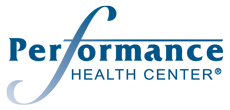Concussions are awful. There are close to 4 million sports related concussions in the U.S. every year. Your brain gets shaken up like an egg inside its shell. The skull doesn’t crack but the brain gets rattle around. You might lose consciousness, balance, ability to talk, have a headache and the world appears fuzzy. You go through concussion protocol testing and spend anywhere from a few days to weeks resting.
Slowly you start to feel better and eventually get on with life. 15% of concussion suffers have lingering effects which last beyond 3 months which is labeled “post-concussion syndrome. Persistent symptoms include inability to concentrate, memory issues, fatigue, dizziness, irritability, anxiousness, insomnia, blurry vision, noise and light sensitivity, and headache.
A recent study from the American Journal of Neuroradiology (AJNR) tried to determine if there was correlation between the suboccipital muscles and recovery time from post-concussion syndrome. The suboccipital muscles connect the upper neck vertebrae to the back part of the skull called the occiput. There are seven (7) muscles that make up the suboccipital muscles. An MRI of sixty-four consecutive patients with post-concussion syndrome was performed and symptoms were tested using standard concussion protocols.
Of the seven (7) suboccipital muscles only one (1) muscle’s cross-sectional diameter proved to have a direct association with post-concussion symptoms. That muscle is the Rectus Capitus Posterior Minor. (RCPMinor). There was a direct correlation with the RCPMinor and “greater symptom severity, longer recovery time, poor verbal memory performance and headache”. None of the other suboccipital muscles had a direct correlation.
What is so special about the RCPMinor muscles that it effects the recovery time ofpost-concussion syndrome? The RCPMinor is the only suboccipital muscle that has a ligament bridge that connects to the dura mater of your spinal cord right where your brain and spinal cord join. The dura mater is the outer protective membrane of the spinal cord. The theory is that the RCPMinor tugs on the spinal cord covering contributing to post-concussion symptoms.
I am only aware of one soft tissue technique that can isolate, evaluate and treat the RCPMinor muscle. That technique is called Active Release Techniques® or (ART). ART is patented and consists of over 500 specific protocols which differentiate, isolate, evaluate and treat the individual muscles in the body. The goal of ART is to release adhesions or scar tissue in muscles, ligament and nerve pathways in the body, in essence the soft tissues of the body. ART is cutting edge and is becoming the gold standard in treating soft tissue injuries. ART is done by hand. In order to become certified in ART you need to go through a certification course. Certification needs to be renewed every year. There are only 40 +/- certified ART providers in Massachusetts.
In the suboccipital region it is possible to isolate and evaluate the RCPMinor muscle using ART. If the RCPMinor is found to be short & tight, a specific tension is applied to the muscle which can normalize the tone and function. I have been an ART provider for 20 years. I have helped many patients suffering from whiplash injuries, headaches and post-concussion symptoms. Even before this study was published I have found that clinically the RCPMinor is a key muscle to treat to resolving post-concussion symptoms. As a side note, if you are suffering from whiplash injuries due to a car accident then it might be a good idea to get a lawyer involved, particularly if the accident wasn’t your fault. A lot of law firms will have a contact us page and this will help you to find the best lawyer for you and your case.
It’s not important to remember the name of the Rectus Capitus Posterior Minor muscle, but it is important to know that ART is one technique that is very effective in finding, evaluating and treating this muscle. If you, a family member or friend has been frustrated due to post-concussion syndrome, chronic headaches or whiplash injury, please get evaluated by an ART certified provider.
To find a certified ART provider anywhere in the world clink this link: http://activerelease.com/find-a-provider.asp
If you would like more information please contact me at: [email protected]
